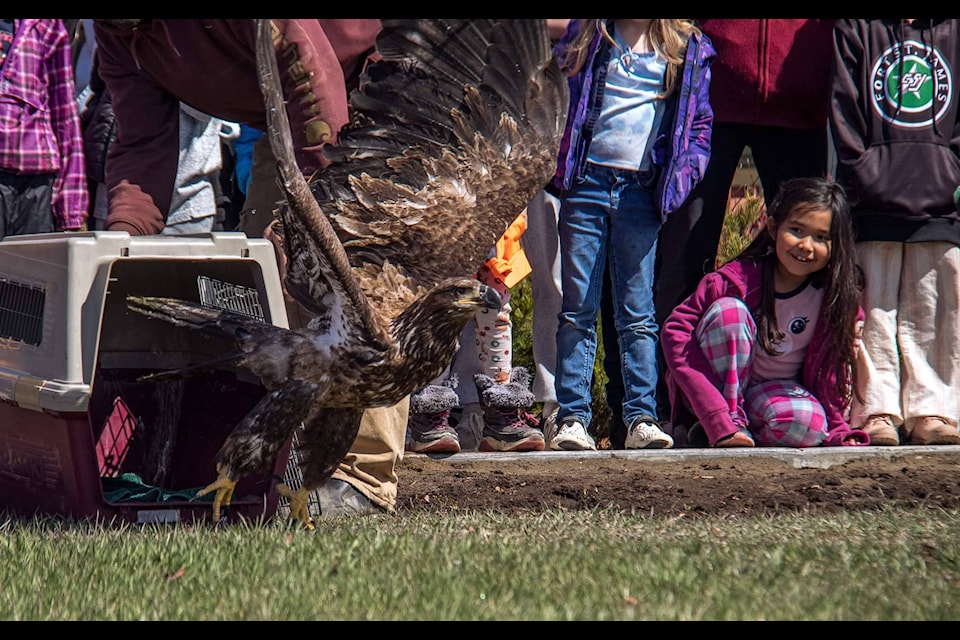Several members of the community cheered on as Fort St. James resident Brad Hoy released a rehabilitated female bald eagle back into the wild earlier this week.
In January, Hoy received word about the injured bird from one of his drivers who spotted it along the roadside.
Acting swiftly, Hoy’s wife located the eagle, braved through snowbanks, and managed to secure the bird in a dog crate. The next day, they transported it to OWL Orphaned Wildlife Rehabilitation Society (OWL) in Delta.
Hoy’s longstanding relationship with OWL and Conservation Services proved invaluable.
Known locally as the go-to person for rescuing injured birds, Hoy ensures that injured wildlife receive the care they need. OWL treated the eagle for a broken wing and lead poisoning, a common issue among birds in the area. The rehabilitation process involved flushing the bloodstream to rid it of lead poisoning.
Fortunately, the eagle’s recovery wasn’t prolonged, and by the time it was ready for release, Hoy was notified.
He believes in involving the community in such events. He often invites the individuals who found the injured animal and other community members to witness the release.
Hoy released the eagle close to where it was found, near the community/Regional District garbage dump, which he says is a common source of lead poisoning for these birds.
Hoy said he finds great satisfaction in facilitating these releases, knowing that he’s giving these animals a second chance at freedom and involving the community in the process.
“It feels good to be able to bring something that would have had no chance in the wild to freedom.”
For Hoy, the release of rehabilitated animals is not just about returning them to the wild but also about fostering a connection between people and nature.
While he does try and minimise human interactions as much as possible, Hoy says that involving the community, especially children, in these releases provides an opportunity for education and appreciation for wildlife.
“It’s nice to involve the local community in the release of these animals because they are respected in many traditions and many nationalities.”
